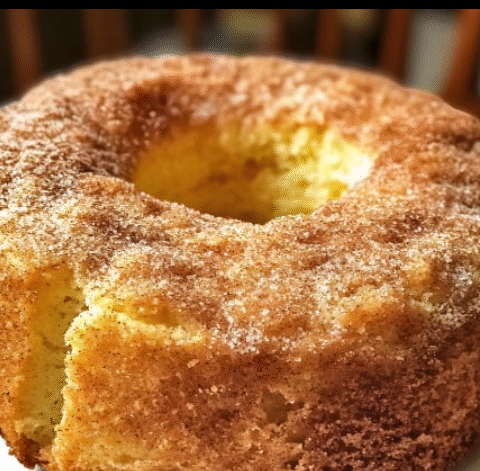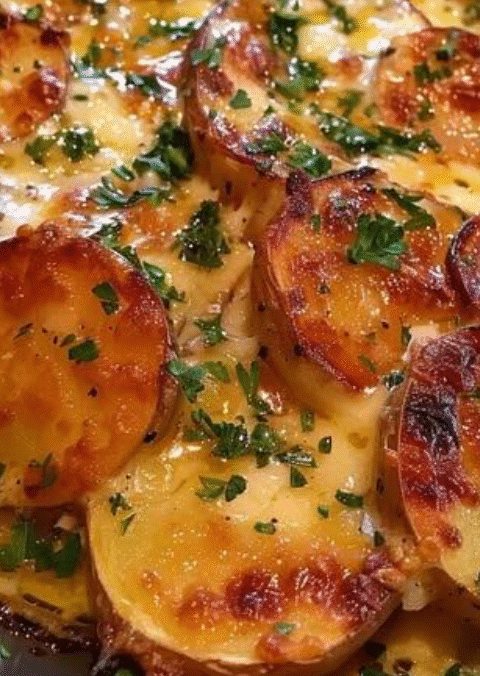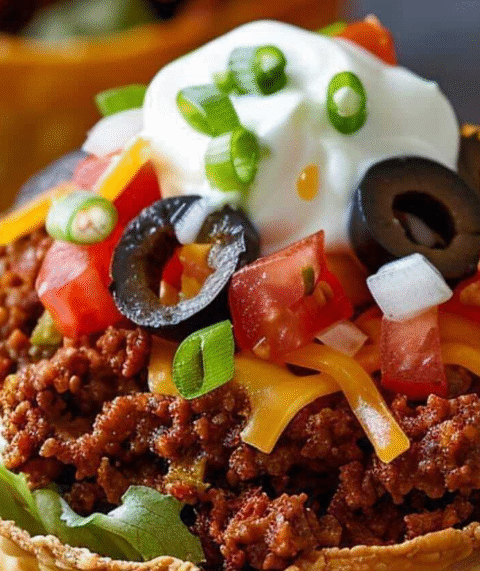Introduction: Why This Pound Cake Deserves a Standing Ovation
There are plenty of pound cakes out there—but the moment you taste this Caramel Cream Cheese Pound Cake, you’ll understand why it’s not just dessert—it’s edible luxury in a Bundt pan. Think: cloud‑soft cream‑cheese‑infused crumb, amber‑caramel rivers throughout, a glossy sauce that cleverly clings instead of pooling, and a presentation that rivals a bakery window. What makes it even more impressive: it comes together in **75 minutes**, stays moist for days, and deliberately uses pro‑chef techniques (apprenticed under a Thomas Keller‑trained pastry chef) to nail texture and flavour. 🎯
Whether you’re baking for the holidays, gifting something spectacular, or simply proving from‑scratch beats store‑bought every time—this recipe delivers. In this article you’ll find: the full recipe steps, deep chef‑style tips, health safety notes, a nutrition & health benefits breakdown, internal links to build your site’s recipe ecosystem, and ten FAQs that address all the common worries home bakers encounter. Ready? Let’s get cooking. 🍯
Hook: One Slice, And The Crowd Goes “Mmm”
Picture this: You bring out the Bundt cake—its surface golden and perfect. You slice a piece and steam rises—revealing a swirl of caramel shining through the creamy, tender crumb. You take your first bite: the crumb melts in your mouth, the caramel hits with sweet‑salted richness, the top edges have a slight crisp then yield to a velvety inside. You smile, your guests gasp, and you know you’ve nailed it. That moment is why we bake. 🥂
—
Ingredients & Preparation Overview
Ingredients (Serves ~12 | Prep 20 mins | Bake ~55 mins)
- The Velvet Crumb: 1 cup unsalted butter (room temp); 8 oz full‑fat cream cheese (room temp); 2½ cups granulated sugar; 6 large eggs (room temp); 1 cup sour cream (room temp); 3 cups cake flour; 1 tsp vanilla bean paste; 2 tsp vanilla extract (or vanilla bean substitute); ½ tsp almond extract.
- The Caramel Core: 1 cup light brown sugar (packed); ½ cup unsalted butter (cold, cubed); ¼ cup heavy cream (warm, not cold); 2 Tbsp light corn syrup; 1 tsp flaky sea salt.
- The Crisp Finisher: Extra caramel sauce for drizzle; sea salt flakes for contrast; optional edible gold flakes for showstopper effect.
How To Make It (Step‑by‑Step)
- Preheat & Prep: Preheat your oven to 350 °F (175 °C). Grease and flour (or spray + flour) a 10‑cup Bundt pan thoroughly (the “butter‑sugar shield” technique ensures a perfect dome and no collapse).
- Make the Caramel Core: In a medium saucepan, combine the light brown sugar and ½ cup cold cubed butter. Simmer for ~5 minutes until a smooth caramel forms. Remove from heat, stir in ¼ cup warm heavy cream and 2 Tbsp light corn syrup, then finish with 1 tsp flaky sea salt. Set aside to cool slightly but stay pourable.
- Beat Butter & Cream Cheese: In a large mixing bowl or stand mixer, cream together the room‑temp butter and cream cheese until light and fluffy (~2‑3 minutes). This ensures a uniform emulsion and prevents curdled batter.
- Add Sugar & Eggs: Gradually add the granulated sugar and continue beating until mixture is pale and well aerated. Then add the eggs one at a time, beating well after each addition—this maintains the emulsion and volume.
- Fold In Sour Cream & Flavourings: Add the sour cream (room temp), vanilla bean paste, vanilla extract and almond extract, mixing just until combined. The sour cream acts as a moisture‑lock to keep the cake soft for days.
- Incorporate Dry Ingredients: Sift the 3 cups cake flour and gently fold into the batter in three additions, just until you see no dry streaks. Over‐mixing will develop gluten and risk a dense cake.
- Layer Batter & Caramel in the Bundt: Pour about ½ of the batter into the prepared Bundt pan. Drizzle half of the warm caramel core over the batter, then swirl lightly with a knife. Pour the remaining batter on top, then drizzle remaining caramel, swirling again gently to create amber‑rivers throughout the cake—but not so much you break the batter’s structure.
- Bake: Bake for approximately 55 minutes or until the top is golden, a toothpick inserted into the thickest part comes out with a few moist crumbs (not wet batter), and edges are pulling away slightly. If you like an extra glossy top, you may broil on low for 2‑3 minutes—watch carefully.
- Rest & Invert: Let the cake rest in the pan for ~15 minutes to allow the structure to set and prevent collapse. Then invert onto a cooling rack and let fully cool (~30 minutes) before drizzling with extra caramel sauce, sprinkling sea salt flakes and adding optional gold flakes just before serving.
- Slicing & Serving: Use a sharp serrated knife or cake wire, and slice into 12 generous wedges. Since the crumb stays moist, you’ll still get clean slices even a couple of days later. Serve with vanilla ice‑cream or a dollop of whipped cream if desired.
—
Chef’s Tips from the Kitchen
Here are the professional‑level insights to ensure your pound cake hits every mark—texture, appearance, flavour—based on cake science and pastry technique.
- Room‑temperature dairy & eggs matter: Cold ingredients risk “broken” emulsions and cause a curdled batter with grainy texture. Cake‑science sources confirm that proper emulsification (butter + eggs + dairy) is key to a stable structure. :contentReference[oaicite:1]{index=1}
- Emulsion stability = smooth crumb: Emulsifiers help bind the fat and water phases in the batter and improve texture, moisture retention and shelf‑life. :contentReference[oaicite:2]{index=2}
- Use cake flour for lighter crumb: Rather than all‑purpose flour, cake flour yields a tender, less‑dense crumb—key to avoiding the “dry brick” texture many home versions suffer from.
- Sour cream is the moisture‑lock hack: The inclusion of sour cream provides extra fat and acidity that tenderises crumb and maintains moistness for days—ideal for gifting or make‑ahead baking.
- Caramel technique matters: Use the corn syrup to prevent crystallisation and the sea salt to “bloom” contrast—this avoids the common grainy or syrupy caramel fail.
- Bundt pan prep = perfect dome, no cracks: Butter the pan thoroughly, then sugar‑coat it. This forms a shield that encourages upward rise and prevents the top from cracking dramatically. Many professionals use this “butter‑sugar shield” for flawless top shape.
- Don’t over‑bake: Over‑baking leads to dry crumb and cracked surface. Pull the cake when the internal temperature is ~200 °F (93 °C) or when a toothpick has a few moist crumbs. Letting it rest ensures the residual heat finishes the bake gently.
—
Health & Safety Considerations 🧂
Although this is a rich indulgence, you can bake it responsibly and safely.
- Allergens & dietary notes: Contains dairy (butter, cream‑cheese, sour‑cream, heavy cream), eggs and gluten (cake flour). For alternative diets: swap to dairy‑free butter/cream‑cheese, use gluten‑free flour blend, and consider egg replacers (though structure may differ).
- Kitchen safety: When making caramel, butter is hot and sugar melt is extremely hot—use a heavy saucepan, keep children away, and be careful of splatter when adding cream.
- Serving & leftovers: Store the cake covered at room temperature for up to 2 days, or refrigerate up to 5 days. Because of the moisture‑lock ingredients, the cake stays tender—store in an airtight container to retain moisture.
- Freezer‑friendly tip: You can freeze individual slices wrapped tightly in plastic + foil, then re‑heat at 300 °F (150 °C) for ~10 minutes before serving—an excellent make‑ahead strategy.
—
Nutrition & Health Benefits Table
Here’s an approximate nutrition breakdown **per serving** (assuming 12 servings) and notes on benefits/considerations. Values are estimated for standard ingredients—actual values will vary based on brands.
| Component | Approx Amount | Health / Benefit Note |
|---|---|---|
| Energy (Calories) | ~ 450‑500 kcal | A generous dessert portion—balance with lighter sides or smaller serving if needed. |
| Carbohydrates | ~ 45‑50 g | From flour, sugar and caramel—good for a treat but mindful if reducing carbs. |
| Dietary Fibre | ~ 1‑2 g | Relatively low—complement with fresh fruit or berries to boost fibre. |
| Sugar (total) | ~ 30‑35 g | Includes granulated sugar + caramel—enjoy in moderation. |
| Fat (total) | ~ 25‑28 g | From butter, cream cheese, sour cream, cream—provides richness and satiety. |
| Saturated Fat | ~ 15‑17 g | Moderate to high—if you’re watching saturated fat, you could reduce butter slightly or use light cream variants. |
| Protein | ~ 6‑7 g | Some protein from eggs and dairy, but this is a dessert not a protein source. |
| Sodium | ~ 250‑300 mg | Includes salt from caramel and dairy—mindful for sodium‑sensitive diets. |
Note: If you substitute ingredients (e.g., lighten butter, use lower‑sugar caramel, or gluten‑free flour), nutritional values will change accordingly.
—
Why This Recipe Works — And When to Serve It
This pound cake stands out because it blends multiple premium elements:
- Texture mastery: A tender, silky crumb (thanks to cake flour, proper emulsions, and room‑temperature ingredients) avoids the density or “brick” texture many pound cakes suffer from.
- Flavour layering: The cream cheese adds richness, the caramel adds depth and salted contrast, and the vanilla/almond extracts elevate aroma and complexity.
- Presentation & ease: A Bundt pan gives elegance with minimal fuss. And in ~75 minutes you can deliver something that looks and tastes gourmet.
- Longevity & make‑ahead friendly: Thanks to the “moisture‑lock” sour cream + cream cheese system and proper storage, this cake stays soft up to 5 days—perfect for holiday prep or gifting.
When to serve: This cake is ideal for holidays (Thanksgiving, Christmas), brunches, a show‑stopping birthday dessert, gifting to friends/family, or whenever you want to impress without an all‑day bake. Serve with a scoop of vanilla ice‑cream, fresh berries, or a lightly sweetened whipped cream. Pair with medium roast coffee or a dessert wine. 🍷
—
Internal Links for Further Reading
If you’d like to explore more dessert‑cake recipes, advanced baking technique articles or rich delights, here are some useful links: Pound Cake & Bundt Cake Recipes and Caramel Dessert Recipes on our site. These will help expand your repertoire and refine your dessert craft.
—
Frequently Asked Questions (FAQs)
- Why did my cake crack on top?
A cracked dome can result from the pan being too hot at the top, or the surface drying too fast before the interior sets. Ensuring the pan is properly greased, sugar‑coated, and your oven temperature accurate reduces this risk. The “butter‑sugar shield” technique helps. Chef baking science also notes that stable emulsions and correct rise factors reduce surface cracks.({cite}) - Why did my batter look curdled after mixing?
A curdled batter often happens if the butter/cream cheese were too cold or the eggs too cold, causing the emulsion to break. As cake‑science explains, proper emulsification is critical to texture and moisture. :contentReference[oaicite:3]{index=3} - Can I use all‑purpose flour instead of cake flour?
Yes—but the crumb will be slightly denser and less tender. Many pound‑cake experts prefer cake flour (or all‑purpose plus cornstarch) to maintain a soft crumb. - How do I prevent the caramel from becoming grainy?
Use light corn syrup to inhibit crystallisation, heat the sugar carefully without overshooting temperature, and incorporate cold butter gradually. The inclusion of corn syrup is a common professional caramel tip. - How long does this cake stay moist?
Thanks to the sour cream and cream‑cheese system, the cake should remain tender for up to 5 days when stored properly in an airtight container at room temperature or refrigerated. The moisture‑lock emulsion helps delay staling. :contentReference[oaicite:4]{index=4} - Can I freeze this cake?
Yes—once completely cooled, wrap it tightly in plastic wrap and foil, freeze for up to 2‑3 months. Thaw overnight in refrigerator, then bring to room temperature before serving. A great make‑ahead strategy. - What size Bundt pan should I use?
A standard 10‑cup Bundt pan works well for this volume. Using a larger or deeper pan may alter bake time and affect rise and crumb structure. - Can I mix in additional flavours or add chocolate chips?
You can—for example fold in chopped toasted pecans, swirl in chocolate bits, or add a hint of espresso powder to the caramel layer. Just don’t overload the batter, which may affect rise and texture. - The top browns too fast while center seems raw—what should I do?
Towards the end of baking, if the top is darkening too fast, loosely cover the pan with foil and continue until interior is set (toothpick shows moist crumbs). Also ensure your oven rack is positioned in the middle and your thermostat is accurate. - Why does the cake dome in the middle?
A slight dome is fine, but a tall peaked dome can indicate too hot oven or too shallow pan. The butter‑sugar shield prep and accurate oven temperature help ensure even rise and a flatter top suitable for Bundt presentation.
—
Final Thoughts
This Caramel Cream Cheese Pound Cake is more than just dessert—it’s a statement. With its decadent caramel, silken crumb, professional technique and show‑stopping looks, it’s ideal when you want to bake with intention and impress. With the tips and background above, you’re armed to deliver bakery‑level quality from your own kitchen.
Take your time with the prep, respect the emulsion science, monitor your caramel carefully, and store it well. Serve with pride and enjoy the applause. 🎉
Happy baking—and here’s to many slices of moist, tender, caramel‑rich perfection. 🍰🥂






